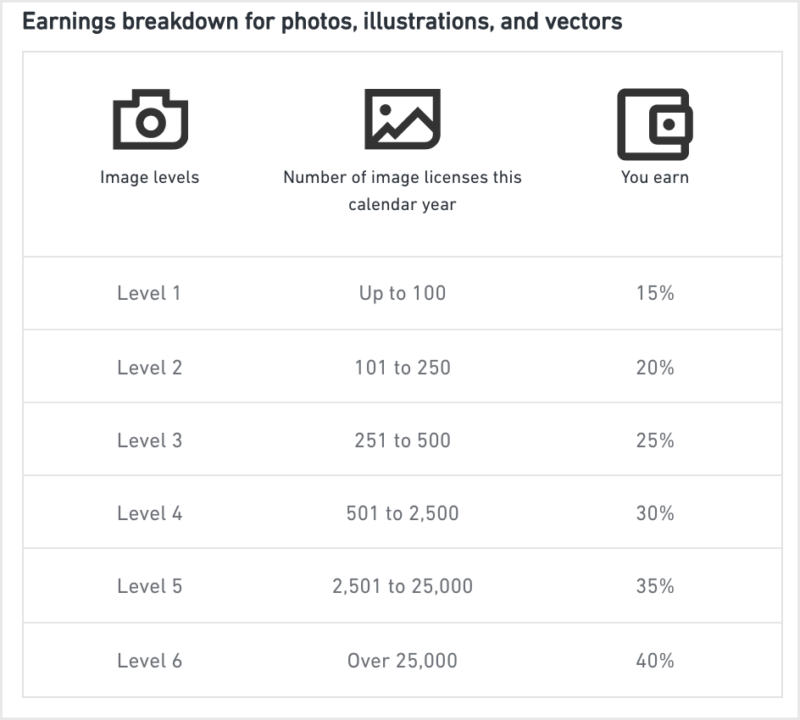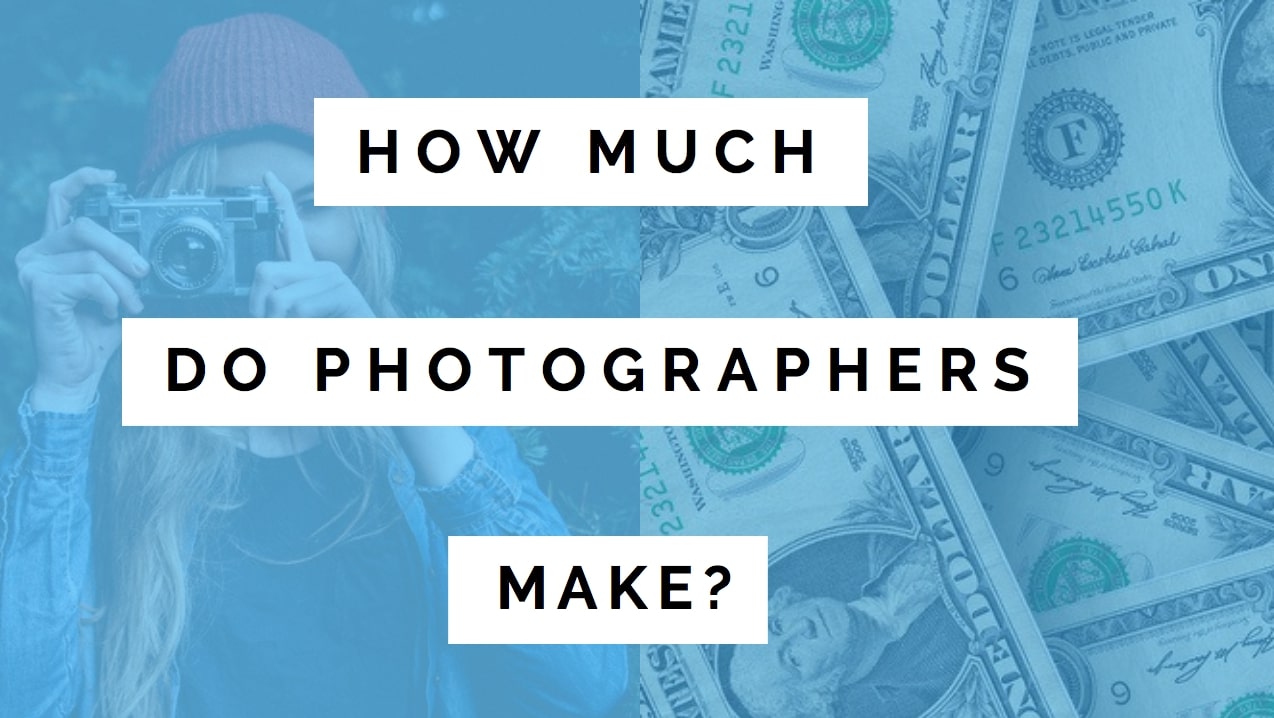If you’re into photography and looking to turn your passion into a source of income, Shutterstock might just be the platform you’re searching for. It’s one of the biggest stock photo marketplaces out there, connecting photographers with millions of customers worldwide. Whether you’re a hobbyist or a professional, Shutterstock offers a straightforward way to showcase your work and earn money. The platform is user-friendly, allowing you to upload images, videos, and illustrations, and then earn royalties whenever someone licenses your content. But how much can you actually make? Let’s dive into what
Factors Influencing Photographer Earnings on Shutterstock

Figuring out exactly how much you can earn from Shutterstock isn’t a one-size-fits-all answer. Your income depends on several factors, and understanding these can help you maximize your earnings. Here are the key elements that influence how much photographers make on Shutterstock:
- Contributor Level and Royalties: Shutterstock has different contributor levels—Standard, Contributor Plus, and Exclusive—that impact your royalty rates. As you upload more quality content and meet certain milestones, you can unlock higher royalty percentages. For example, Standard contributors earn between 15% to 30% per license, depending on their earnings and exclusivity.
- Content Quality and Relevance: High-quality, unique, and relevant images tend to sell better. Shutterstock’s algorithm favors content that matches trending topics and popular searches, increasing your chances of earning more.
- Number of Downloads and Licensing Types: The more your content is downloaded, the more you earn. Additionally, licensing options like Standard or Enhanced licenses can affect your payout, with Enhanced licenses typically earning more.
- Upload Frequency and Portfolio Size: Consistently adding new content can boost your visibility and sales. A larger, diverse portfolio gives you more opportunities for downloads across various categories.
- Exclusivity Agreements: Choosing to be exclusive to Shutterstock usually offers higher royalty rates, but it also means you can’t sell your images elsewhere. Non-exclusive contributors earn slightly lower royalties but have the flexibility to sell on other platforms.
Understanding these factors can help you strategize your uploads and marketing efforts. Remember, success on Shutterstock often requires patience and consistency. While some photographers see steady income streams, others might experience fluctuations based on seasons, trends, and content demand. By focusing on creating high-quality, relevant images and staying active on the platform, you can steadily increase your earnings and turn your photography hobby into a lucrative side hustle or even a full-time profession.
Average Income of Photographers on Shutterstock

So, you’re probably wondering, “How much can I actually make as a photographer on Shutterstock?” Well, the truth is, earnings can vary quite a bit depending on several factors like the quality of your photos, how many you upload, and how often they get downloaded.
On average, Shutterstock contributors earn around $0.25 to $2.50 per download. This might not sound like a lot at first, but it adds up quickly if your images are popular. For instance, if you have a photo that gets downloaded 100 times at $0.25 each, you’d earn about $25. Now, some top contributors with a large portfolio of high-demand images can make several thousand dollars a month!
It’s important to note that Shutterstock operates on a tiered royalty system based on your total lifetime earnings and the type of license purchased. For example:
- Standard License: Typically pays a lower rate, but is the most common for stock images used in marketing, websites, etc.
- Enhanced License: Pays higher royalties and is used for larger, more commercial projects.
Most contributors see their income grow as they build a larger portfolio. Remember, consistency is key. Uploading high-quality, relevant images regularly can significantly boost your earning potential over time.
Another thing to keep in mind is that Shutterstock takes a percentage of your earnings as a commission. The more you sell, the better your payout rate becomes, thanks to their tiered system. So, while the initial earnings per download might seem modest, with persistence and strategic uploading, many photographers are turning Shutterstock into a reliable income source.
Tips to Maximize Your Earnings as a Shutterstock Contributor
Looking to bump up your income on Shutterstock? Here are some practical tips that can help you make the most of your contributions and boost your earning potential:
1. Focus on Niche Topics
Instead of trying to cover everything, find a niche that matches your style and expertise. Specialized images tend to be in higher demand and face less competition. Think about trending topics, specific industries, or unique styles that stand out.
2. Upload Consistently
Regular uploads help keep your portfolio fresh and increase your chances of getting downloads. Set a schedule—whether it’s weekly or bi-weekly—and stick to it. The more quality images you have online, the better your chances of earning more.
3. Optimize Your Metadata
This is the secret sauce! Use descriptive, relevant keywords, clear titles, and detailed descriptions. When buyers search for specific images, your optimized metadata helps your photos appear in results. Think about what your target audience might search for and include those terms.
4. Pay Attention to Image Quality
High-resolution, well-lit, and professionally styled images tend to perform better. Invest in good equipment and editing software if needed. Remember, the stock photo market is competitive, so quality really matters.
5. Keep Up with Trends
Stay informed about what’s popular in the stock photography world. For example, current events, new technology, or cultural shifts can create demand for certain types of images. Use tools like Google Trends or Shutterstock’s trending searches to guide your uploads.
6. Use Consistent Branding and Style
If you develop a recognizable style, your images can become your signature, attracting repeat buyers. Consistency helps in building a brand that clients trust and seek out.
7. Engage with the Shutterstock Community
Participate in forums, follow top contributors, and learn from others’ success stories. Sometimes, small tips or feedback can make a big difference in improving your portfolio and earnings.
In essence, maximizing your Shutterstock earnings involves a mix of strategic planning, consistent effort, and a keen eye for quality and trends. Keep experimenting, stay patient, and over time, you’ll see your income grow!
Comparing Shutterstock Earnings with Other Stock Photography Platforms
When you’re diving into the world of stock photography, it’s natural to wonder how Shutterstock stacks up against other platforms in terms of earnings. After all, understanding where your photos can bring in the most income helps you make smarter decisions about where to upload and how to optimize your portfolio.
Shutterstock is one of the biggest names in the industry, and it’s known for its large customer base and straightforward licensing options. But how does it compare to other platforms like Adobe Stock, iStock, or Alamy?
Key Differences in Earnings
- Revenue Share & Royalties: Shutterstock offers a tiered royalty system based on your lifetime earnings on the platform. For new contributors, the starting royalty rate is typically around 15-20%, which can increase as you earn more. In comparison, Adobe Stock generally offers around 33% royalty on each sale, which is higher but with a smaller contributor base.
- Pricing Models & Customer Base: Shutterstock’s subscription model means that many images are sold through monthly plans, often resulting in lower per-image payouts but higher volume. Platforms like Alamy tend to focus more on individual image sales at higher prices, which can lead to more substantial earnings per sale but fewer overall sales.
- Exclusive vs. Non-Exclusive: Shutterstock allows non-exclusive submissions, meaning you can upload your images elsewhere too. Some platforms, like iStock, offer better royalties for exclusive contributors, which can boost earnings if you commit to one platform.
Which Platform Might Be Better for You?
If you’re just starting out, Shutterstock’s massive user base can be a big advantage. It offers a steady stream of potential buyers, but the competition is fierce, and the earnings per sale can be modest unless you build a large portfolio or gain exclusive rights.
On the other hand, if you have high-quality, unique images and are willing to focus on fewer sales at higher prices, platforms like Alamy or stock agencies with higher royalty rates might be more lucrative.
Final Takeaway
Ultimately, diversifying your presence across multiple platforms can maximize your income. While Shutterstock provides volume and exposure, exploring other sites may open doors to higher-paying opportunities. Keep in mind that each platform has its own rules, payout structures, and user base, so it’s worth doing some research and perhaps testing the waters to see where you earn the most.
Conclusion and Final Thoughts on Shutterstock Photography Income
So, how much can you really earn from Shutterstock? The truth is, it varies widely based on factors like your portfolio size, photo quality, licensing types, and how much effort you put into uploading and promoting your work. Some photographers make a modest side income, while others have turned stock photography into a full-time gig.
One thing is clear: consistency and quality matter. The more high-quality images you upload, the better your chances of earning more over time. Also, understanding the platform’s licensing models and pricing can help you optimize your earnings. Remember, Shutterstock’s tiered royalty system and subscription-based sales mean that your income can fluctuate month to month, but with patience and persistence, it’s possible to build a reliable income stream.
Finally, don’t forget to diversify. Relying solely on Shutterstock might limit your earning potential. Explore other platforms, specialize in niche subjects, and keep refining your craft. Stock photography can be a rewarding way to earn passive income, but like any other business, it requires effort, strategy, and a bit of patience.
Happy shooting, and here’s to turning your creative passion into a sustainable income!


